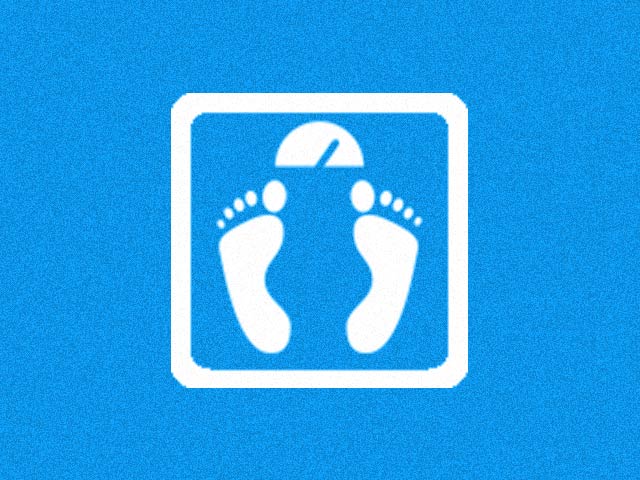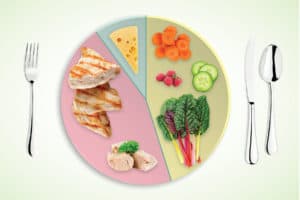It can be devastating to know where to start on a ketogenic diet. A good way to start is to sit for few minutes, put down our phones, and ask ourselves: what is our most important goal? From there, we can read-up on relevant keto information, prepare our grocery list, and go for it! Some metrics and measuring techniques are required here.
The goal usually involves something measurable, which means it’s important for us to pick the metrics that are meaningful to us, and track them. Not doing so would be like shooting a basketball and not looking to see if it went in the hoop. Tracking metrics can be a bit intimidating, but it is perhaps the most motivating and rewarding thing you can do on your journey. You will see the progress in you and you will be happier.
Listed below are the Metrics and measuring techniques used to determine a personalized keto diet-
1. Macros
Our macronutrients involve Fats. Protein, and carbohydrates. These are the three major nutrients required by your body for growth and development. All the nutrients have different effects on ketosis because of how our body digests and metabolizes them.
The typical macro ratio looks like the following :
- 5% of calories coming from carbohydrates
- 25% of calories coming from protein
- 70% of calories coming from fat
Your macros calculation depends on your daily calorie needs, your carbs, proteins, and fats needs. Once you’ve got your daily energy values, you can build your macro goals accordingly.
Following a keto diet requires strict control over your macronutrients- especially carbohydrates. This could be a challenge in the initial phase but once you get to know a little nutrition know-how and you have the calculator to count your macros you can easily learn this skill.
Use the keto calculators available on the App store to calculate your macros for a day. Keto calculators ask for your basic body parameters, activity time, lifestyle kind of parameters to give you the right amount of macros you have to take in a day.
Benefits of Keto Calculator-
- Keto Calculators are free of cost, easy, and reliable.
- You can keep track of your macro intake easily on a daily basis.
- It increases your chances of getting the good results you want. Just use this calculator and you don’t need to make a guess every time while having your meals.
Learning how to correctly calculate and track macros is a core base of a properly designed keto diet. Macros are the first important metrics to see while going on a keto diet.
2. Fasting Blood Sugar
Take this reading first thing in the morning before consuming any food or drink. This number is an excellent indicator of how well you are managing your macros and exercise on keto. Fasting glucose should lower down as you reduce carbs and deplete your body’s glycogen stores. If the number of ticks rise on a given day, chances are your carb intake was higher and/or physical activity was lower. As you get more experienced with how your body’s fasting glucose measurements respond to keto, you will find this to be one of the most useful metrics you can collect.
How to calculate your blood sugar-
- With clean hands, put a test strip in your blood sugar meter.
- Prick the side of a finger with the lancet to draw a drop of blood.
- Place the tip of the test strip on the drop of blood.
- After a few seconds, the blood sugar meter will show the reading.
Many people examine their blood sugar first thing in the morning, before eating. Because no food has been consumed for at least 8-10 hours, a blood sugar measurement at this time of day is called a “fasting blood sugar.” It’s best to check this at the same time every day.
Normal Fasting Blood Sugar levels –
A normal fasting blood sugar level in someone who does not have diabetes is generally between 70 and 100 mg/dL (3.9 to 5.6 mmol/L).
Fasting blood sugar that consistently falls in the range of 100 to 125 mg/dL (5.6 to 6.9 mmol/L) is considered prediabetes, which is also referred to as impaired fasting glucose. If your fasting blood sugar is above 126 mg/dL (7.0 mmol/l) on two separate occasions, then you may have diabetes.
Measuring your blood sugar levels while on keto is an important parameter to know how your body responds.
3. Body Measurements
One signal of successful dieting and weight loss is taking body tape measurements. Body tape measurements are a way better metrics to use for tracking your body composition changes.
This is a motivating metric because it often takes time to lose weight, but you might feel your clothes fit better. Taking measurements will show how your body’s transforming over time. In many cases, we may see only modest weight loss on the scale as we go keto. Some of us may even put on weight as we shed fat and replace it with lean muscle. In these cases, the scale can be misleading but the tape measure won’t lie. You can measure
Body Parts to Measure through the tape-
- shoulders
- biceps
- chest
- waist
- thigh
- calf
- hips (the fullest part of your seat)
Keeping a notebook or notes in your phone, or an excel sheet is useful to track progress over time, and measuring on a weekly basis is best.
4. Ketone levels
While following a ketogenic diet it is important to test your ketones. It is a very important metrics to track on a keto diet.
What are ketones? When in ketosis, your body doesn’t depend on carbs as a form of energy anymore and instead, relies on fats for fuel! When your body breaks down these fats, it creates molecules called ketone bodies (or ketones). Since you’re not consuming as many carbohydrates and replacing them with fats, “more fat is metabolized and a greater quantity of ketones are created.”
Three ways to measure ketones in your body:
- Keto diastix: Measures ketones in the urine
- Keto breath analyzer: Measures ketones through the breath
- Blood ketone meter: Measure ketones in the blood
Use keto diastix as It is the most inexpensive way to measure ketones. The most accurate means to do so is the blood ketone meter, but that’s quite expensive.
Measuring through Keto Diastix–
It’s the most inexpensive method to measure your ketone levels through urine. The process of measuring through keto strips is –
- Wipe your hands, then take a urine sample in a small glass.
- Immerse the absorptive end of the strip into the sample for a few seconds, then remove.
- Wait for the amount of time outlined on the package for the strip to change color.
- Differentiate the strip with the color chart on the packaging.
- Dispose of the urine and strip in a correct manner before washing your hands.
The color matches to the concentration of ketones in your urine, which can range from no ketones to high concentrations. Dark color shows high ketone levels.
Urine strips are an economical and convenient way to measure ketosis. Follow the directions on the kit for the most accurate results.
Measuring through Blood Ketone Meter–
It’s quite an expensive method. It’s generally made for type-1 diabetic patients. It is an accurate and reliable way to measure ketones through blood strips.

here\’s how a blood ketone meter works:
- Clean your hands.
- Load the blade with the needle, following the directions provided.
- Put a blood ketone strip into the ketone meter.
- Prick your finger to draw a small drop of blood using the lancet.
- Let the strip come in touch with the drop of blood and check the results.
- Dispose of the strip and blade as suggested in the directions.
Blood ketone levels are measured in mmol/L. The optimal ranges of BHB levels are between 1.50-3.0 mmol/L.”
Measuring through Breathalyzer–
Ketonix breath analyzer is used to measure your ketone levels in your breath. They are very expensive, ranging up to 17000 INR. Acetones are measured to check your ketones. Acetones as a substance outside the body are colorless, volatile, flammable liquid. Measurements in acetone would be in mmol/L. The optimal ranges are between 3-6mmol/L and should be above 0.5mmol/L.
Measuring your ketone levels is important so as to target your specific goals on a keto diet and get some good results.
5. Sleep patterns
What does sleep have to do with metabolism, weight loss, and keto? A lot, actually. Sleep can be just as vital as proper nutrition when it comes to managing blood glucose levels, especially for those already dealing with metabolic diseases. No good-quality of sleep can affect the hormones that regulate appetite and cause us to crave nutrient-poor, high-calorie foods. Lack of sleep can also cause symptoms in the body that resemble insulin resistance.
Getting enough sleep is vital. Not getting enough sleep, will not only hinder your progress with the keto diet but also affect your overall health. However, sometimes keto followers find that they might have insomnia initially. Others might find that they sleep better and have a lot more energy during their day.
A 7-8hous sleep is enough on a keto diet or in your normal lifestyle. You can use the sleep trackers app on the App Store for measuring the number of hours you sleep in a day. Sleep is one of the vital metrics.
6. Activity
Activity and eating patterns go hand-in-hand in making a change. It will keep your metabolism moving, your endorphins flowing, and improve your overall health and happiness. Activity is also a metric that plays a part in your physical performance.
Sitting all day leads to?
Nowadays, we spend most of the time sitting at work or watching TV at home. Our bodies are in a metabolically dysfunctional state. In fact, nowadays., we now spend more time sitting than we do sleeping! The best keto diet in the world will have limited benefits if you aren’t getting off your butt and getting enough movement. Our bodies have evolved to move!
Walking for 10,000 – 15,000 steps per day can be an incredibly easy and effective way to ensure we are avoiding sedentary behavior and getting enough movement to maintain a healthy metabolism.
7. Fun –
Wondering why fun? Well, I just want to remind you don’t forget to enjoy the journey. We have one life so enjoy every moment of it whether you are on a keto diet or not. Spend time with your family, friends, coworkers, spend time outdoors, go for a long walk, and enjoy every occasion indulging in your life. Good keto health with a positive and well-balanced life outlook are a winning combination!
Hence, The keto diet requires plenty of thought and planning, especially in the beginning when you’re still getting the hang of it. Keeping track of metrics like macronutrient intake and sleep levels will keep you accountable and provide you with real-life data about your progress.
This is as easy as it gets, so what is your excuse now? Get yourself started today and Stay tuned for more such keto weight loss journeys, health content, and recipes! Also, don\’t forget to follow us on Instagram for the daily dose of the Keto Lifestyle.















